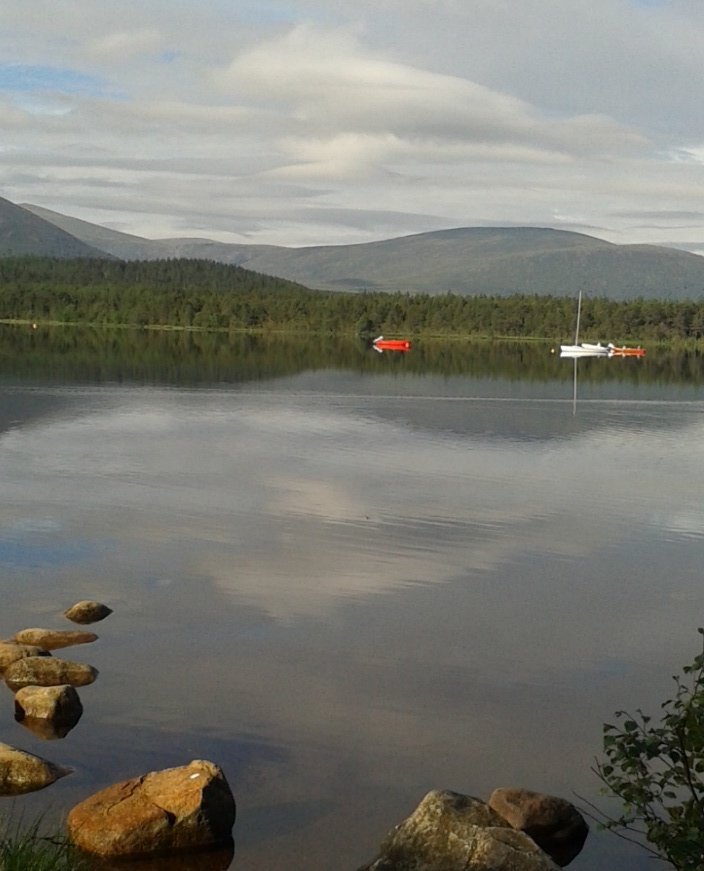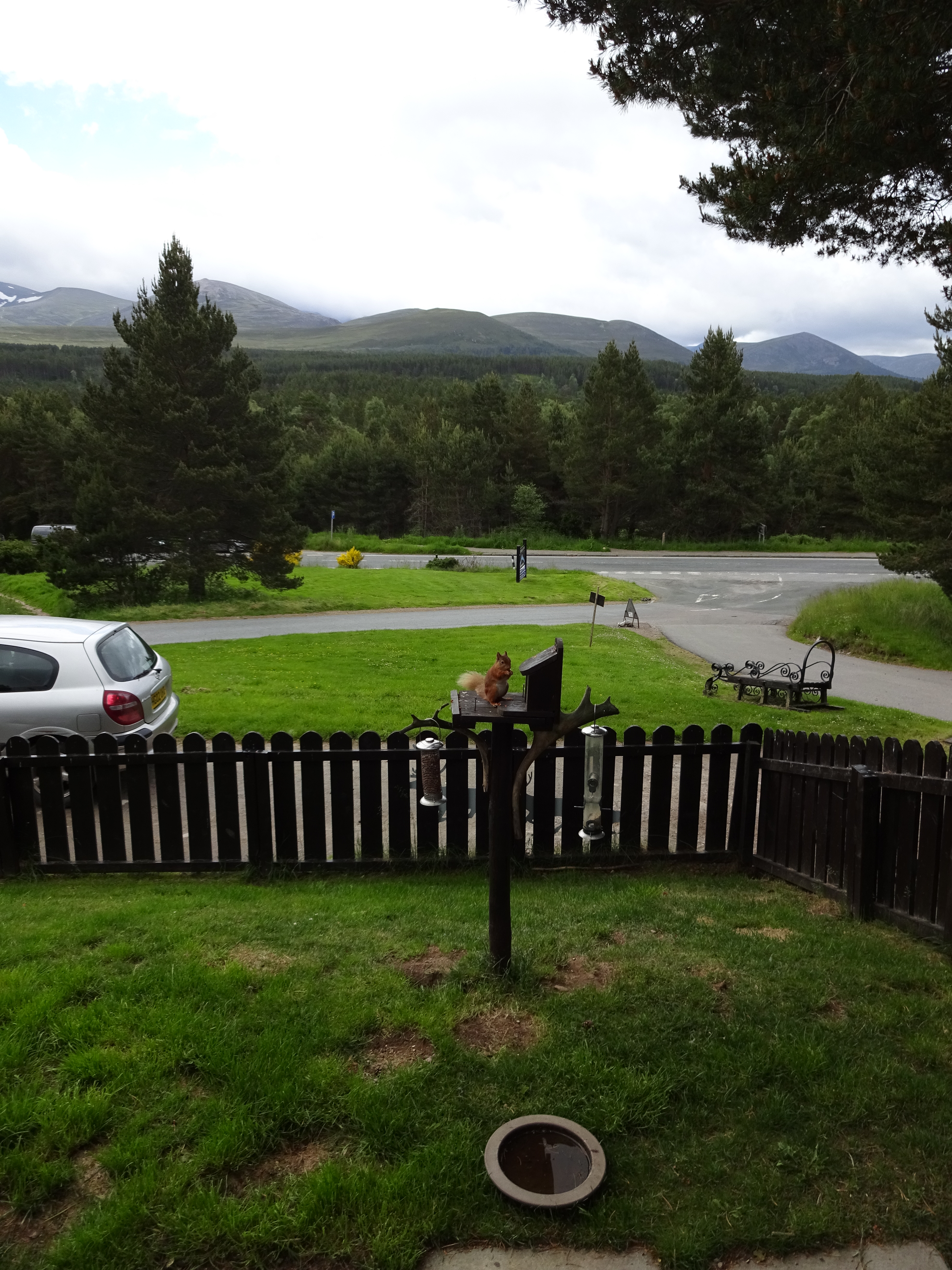This week’s blog focuses on the introduction of reindeer to obscure places around the world. I will pay particular attention to the introduction of reindeer in the lesser-known Kerguelen Islands.

The Cairngorm Reindeer Herd is a re-introduced herd. Reindeer were once native to Scotland, and before that they could also be found across England. In fact, cave paintings of reindeer have been found as far south as the Pyrenees in Northern Spain/Southern France. A leftover memory from when the planet was no doubt a lot colder. However, the native reindeer in Scotland were thought to have died out between 800 and 1100 years ago due to both over-hunting and climate change related habitat loss. The story of our current herd of 150 reindeer began in 1949 when a Swedish reindeer herder called Mikel Utsi and his wife, Dr Ethel Lindgren, began their honeymoon in Aviemore. Mr Utsi gazed out at the Cairngorm mountains and saw the perfect conditions for reindeer but, alas, no reindeer. Mr Utsi would have seen cold and windy temperatures, a tundra landscape, and sub-arctic flora. This is because the Cairngorm mountains are the only place in the United Kingdom with sub-arctic conditions. Mr Utsi apparently spent days looking for the reindeer in the hills before dropping down to the local pub to ask the locals about their reindeer. It was here that he found out that there were no reindeer. His honeymoon doesn’t sound like your stereotypical relaxing and romantic honeymoon, at least they got some time in the pub, but his marriage withstood and together Mr Utsi and Dr Lindgren made it their life’s work to reintroduce reindeer to Scotland. It started with 8 reindeer being shipped over from Sweden in 1952 and many subsequent initial imports. And the rest, as they say, is history. We now have a reintroduced herd with a variety of genetic diversity.

Other herds of reindeer have also been introduced to different countries around the world in the not so distant past. Some reindeer have been introduced into locations where there have never been reindeer previously. Iceland is a good example of a country where reindeer have been introduced successfully. Although, this introduction wasn’t without its problems. Predominantly located in the east of Iceland, Icelandic reindeer were once close to extinction having been introduced between the years of 1771-1787. Up until the year of 1940 their numbers had gradually dropped to approximately 100-200 but stocks have now risen to between 6000-7000. The reason for the fluctuations in population is probably due to natural circumstances such as insufficient grazing, range deterioration and volcanic eruptions. More information about reindeer in Iceland can be found in a previous blog post written by Bobby: https://www.cairngormreindeer.co.uk/2020/04/17/the-curious-history-of-reindeer-in-iceland/.
Most reindeer and caribou around the world live in the arctic and sub-arctic regions of the Northern Hemisphere as these are the conditions that they’ve evolved to thrive in over the course of evolution. But reindeer are incredibly adaptable and resilient, and humans have attempted to introduce them to a variety of places, some even south of the equator. Reindeer were introduced to the South Georgia Islands (about 1000 miles east of Cape Horn, Argentina) by Norwegian whalers, where the reindeer lived alongside penguins for around 100 years. However, in 2010 the government decided to eradicate the reindeer as the number were increasing and putting too much pressure on the island’s native plants and wildlife. By 2017 all reindeer were eradicated from the island. Approximately 6,750 reindeer were culled in total. More information about reindeer in South Georgia can be found here: https://www.atlasobscura.com/articles/reindeer-in-the-southern-hemisphere.


The introduction of reindeer to the Kerguelen Islands, also known as the Desolation Islands, is a slightly happier story. The reindeer remain as residents today in these islands that are located over 2000 miles from their nearest neighbour, Madagascar. The Kerguelen Islands are a group of islands in the sub-Antarctic (southern Indian Ocean) made from igneous (volcanic) rock. They are part of a submerged microcontinent called the Kerguelen Subcontinent. Kerguelen’s climate is considered to be a tundra climate with cold temperatures and high wind speeds. The mountains are frequently covered in snow and the average annual temperature is 4.9 degrees Celsius. Lichens, grasses, and mosses grow plentifully as does the famous, indigenous Kerguelen cabbage which was popular with sailors in their bid to increase their vitamin C intake. The main indigenous animals are wingless insects, seabirds, seals, and penguins but there has been plenty of introduced animals such as cats, rabbits, sheep, and reindeer (interestingly, all cats on the island are black and white because the original 3 introduced cats were black and white).

The French originally introduced Swedish reindeer to the islands in 1956. The Kerguelen Islands were used as one of the whaling stations, where whalers would bring their catch for processing. Reindeer were introduced to be shot for food, as well as being hunted for sport. However, when the whaling industry collapsed, the reindeer stayed and there is now an estimated 3000 – 5000 reindeer on the islands. The reindeer were originally introduced to Ile des Rennes (Reindeer Island), also called Ile Australia. However, the reindeer eventually swam across to the main island of La Grande Terre a short distance away.

The conditions in the Kerguelen Islands are very similar to the conditions found in parts of Scandinavia. However, it would be interesting to know how the reindeer adapted to the change in seasons as they moved from the Northern to the Southern hemisphere. And, moreover, the effect that reindeer have had on the island’s vegetation. Researchers have previously believed that very high grazing pressure over time pushes the ecosystem in a positive direction, so that over time, the areas that are grazed become dominated by productive plants, such as nutrient-rich species of grasses. However, The Ecosystem Finnmark project believe that reindeer have a negative effect on grazing areas, even in the most productive summer pastures.
Ben











































